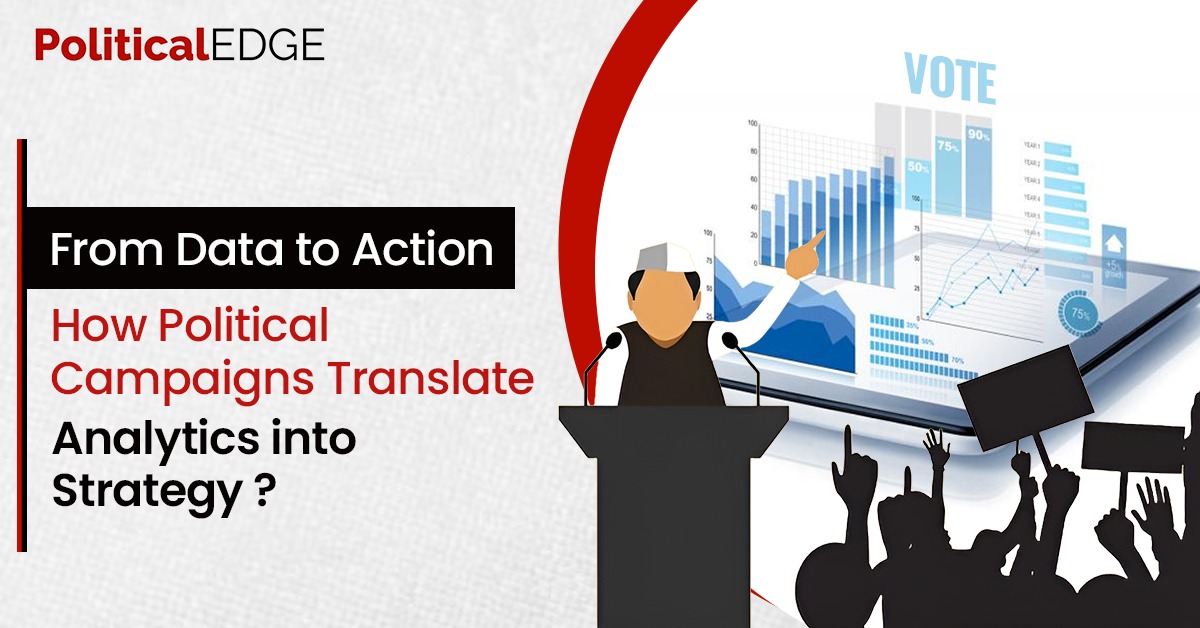
In recent times of politics, the adage “knowledge is power” has taken a whole new meaning. Gone are the days when gut instincts and superficial evidence guided political campaigns. Today, data reigns supreme, driving decision-making processes and shaping campaign strategies. In this blog post, we delve into the intricate dance between data analytics and political strategy, exploring how political campaigns harness data to gain insights and, ultimately, secure victory.
Use of Data in Political Campaigns
Globally, data-driven campaigning is becoming a standard in political campaigns. There is mounting evidence that both elite and grassroots political activists think that data is important for winning elections. The way that political campaigns are run is being significantly impacted by this concept. Yet, there are many distinct ways that data is used in data-driven campaigning in practice, and there is no one type of campaigning that uses data in this way. These differences are significant because they have varying implications for democracy. While some data usage can be seen as acceptable, others might cause problems for democracy.
The advent of big data and advanced analytics has revolutionized political campaigning. Campaign teams now have access to an unprecedented wealth of information, including voter demographics, preferences, behaviors, and sentiment. From social media interactions to voter registration records, every interaction leaves a digital footprint that can be analyzed and leveraged.
Data Collection and Analysis
The journey from data to action begins with comprehensive data collection. Political campaigns employ a variety of tools and techniques to gather data from multiple sources, including voter registration databases, public records, surveys, and social media platforms. This data is then aggregated, cleaned, and analyzed using sophisticated analytics tools and algorithms.
Advanced analytics techniques such as predictive modeling, machine learning, and sentiment analysis are used to extract meaningful insights from the vast sea of data. These insights help campaigns understand voter behavior, identify key issues and concerns, and uncover hidden patterns and trends.
Targeting and Segmentation
Armed with insights gleaned from data analysis, political campaigns can tailor their messaging and outreach efforts to specific voter segments. Through audience segmentation, campaigns can identify key demographic groups and craft targeted messages that resonate with their interests and concerns.
For example, a campaign may identify suburban women as a key demographic and tailor messages related to healthcare and education to appeal to their interests. By delivering personalized and relevant content, campaigns can effectively engage voters and mobilize support.
Microtargeting and Persuasion
By delivering extremely tailored messages and adverts to specific voters, microtargeting goes beyond audience segmentation. Campaigns can create customized messaging to sway indecisive voters and energize supporters by utilizing voter preferences, behaviors, and attitudes data.
Targeted digital commercials, social media advertising, and customized email campaigns are examples of microtargeting strategies. By using these strategies, campaigns may maximize the impact of their messaging by connecting with voters on the platforms and channels they use most frequently.
Testing and Optimization
Agility and adaptability are critically important in the fast-paced domain of political campaigns. To be as effective as possible and to keep one step ahead of the competition, campaigns need to test and refine their methods often. To improve message, targeting, and outreach initiatives, common strategies include A/B testing, multivariate testing, and data-driven experimentation.
Campaigns may more efficiently spend resources and adjust their approach in real time by evaluating the effectiveness of various strategies and tactics to determine what works and what doesn’t.
Conclusion
As we look to the future, the role of data analytics in politics will only continue to grow. By embracing data-driven decision-making and leveraging cutting-edge technologies, political campaigns can navigate the complexities of the modern political landscape and drive meaningful change.
In the end, it’s not just about collecting data—it’s about using data to inspire action, mobilize support, and shape the course of history.

